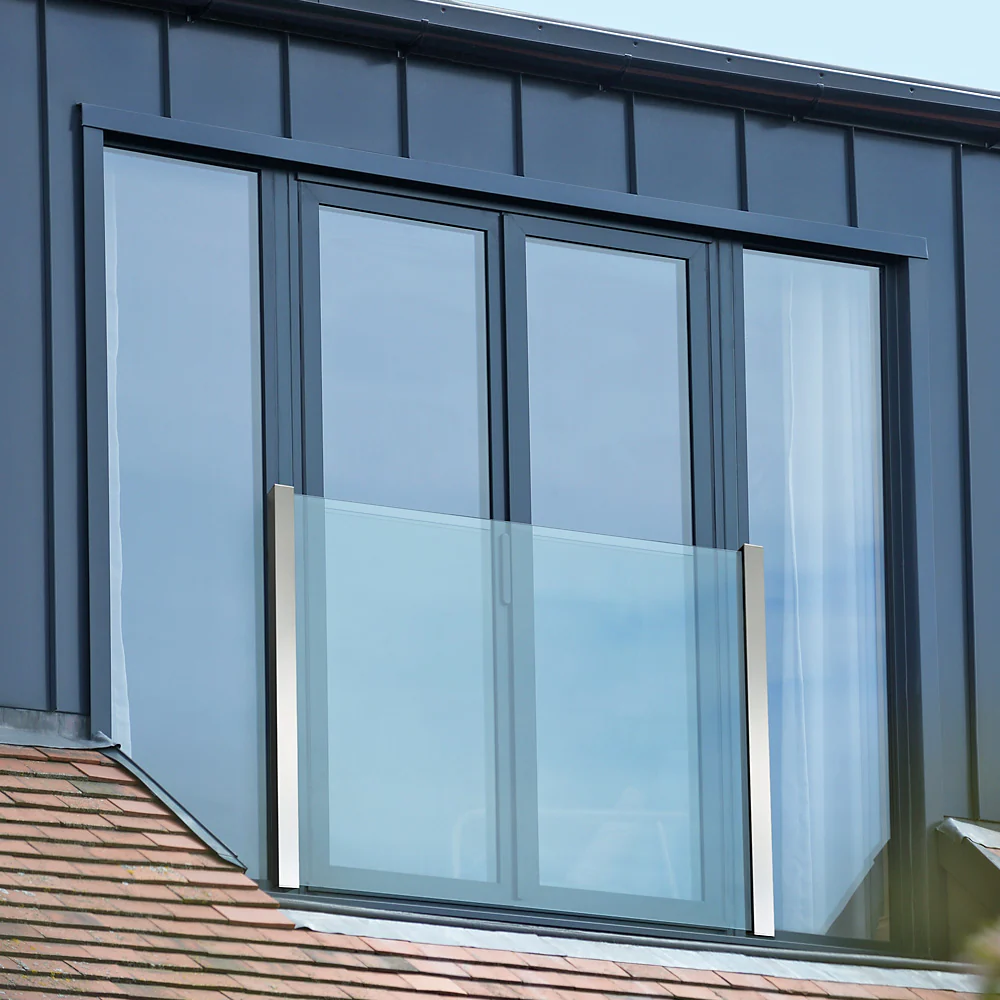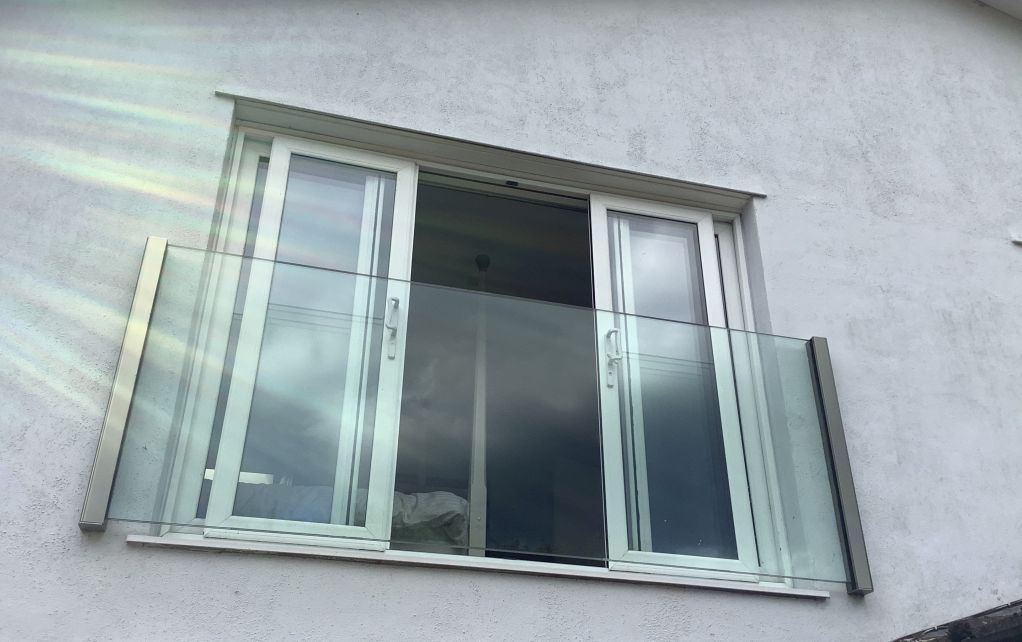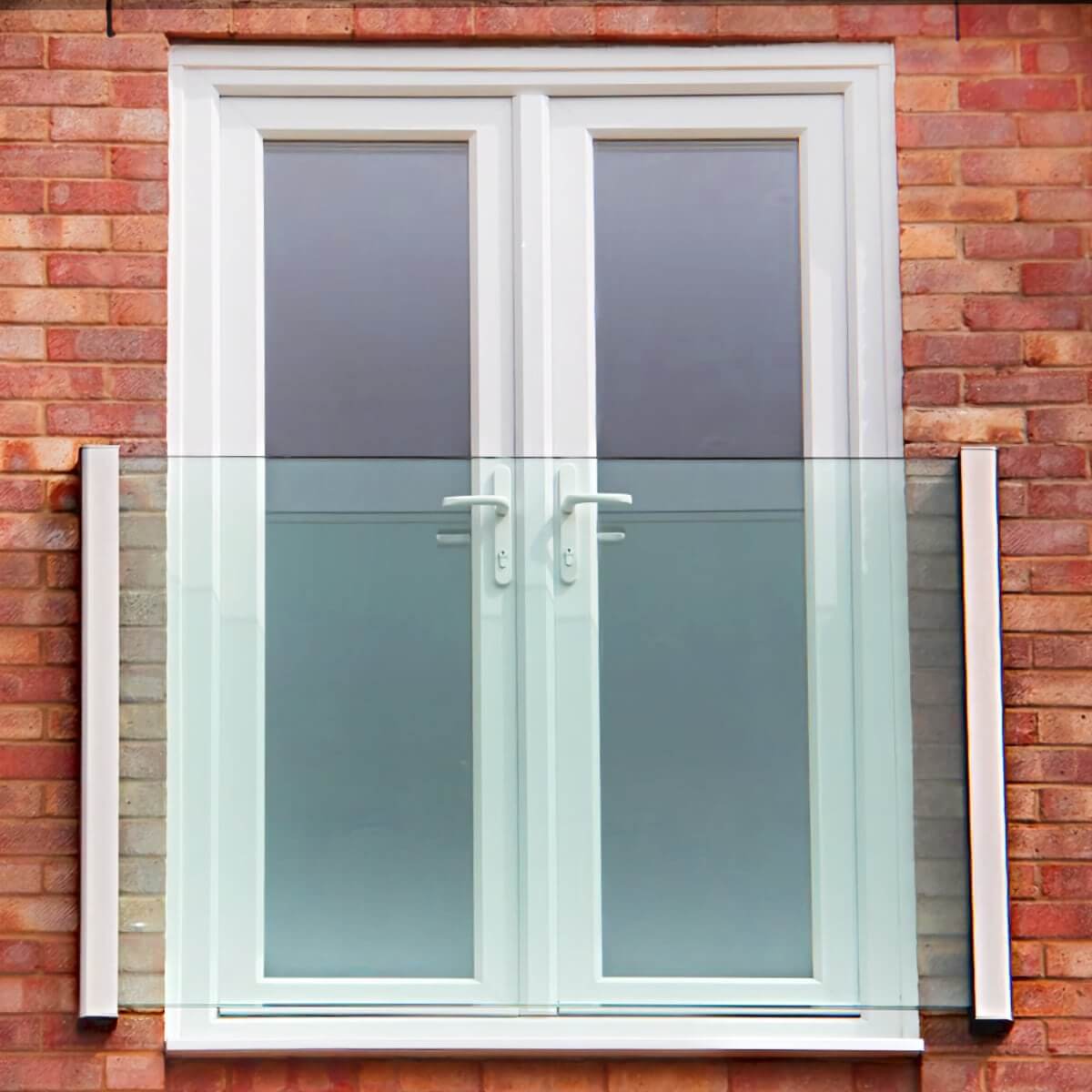Juliet Balcony System
Juliet Balcony
A Juliet balcony is a shallow, decorative balcony that typically does not provide space for standing or sitting. Instead of projecting outward, it consists of a railing installed in front of a floor-to-ceiling door or window, usually on the upper floors of a building.
Its name comes from the famous scene in Romeo and Juliet, where Juliet appears on such a balcony.
| Feature | Description |
|---|---|
| Structure | Railing or guard installed in front of a floor-to-ceiling door (typically French or sliding) |
| Depth | Approximately zero to a few centimeters – no standing space outside |
| Function | Adds safety, increases daylight, improves ventilation, enhances architectural aesthetics |
| Installation | On upper floors, in front of French doors or tall windows |
| Appearance | Simple or decorative, with vertical bars or glass panels |
Types of Aluminum Juliet Balconies
Aluminum is one of the most widely used materials for constructing Juliet balconies.
Railing with vertical or horizontal bars
Combination of aluminum with tempered glass
CNC or laser-cut designs for modern or classic styles
An aluminum Juliet balcony is an excellent choice for modern buildings, providing safety, aesthetics, and natural light—without the need for a full balcony. If you have limited space but want the feeling of a balcony and more daylight, this option is ideal.

Order Your Juliet Balcony
Advantages of Aluminum Balcony
| Advantage | Description |
|---|---|
| Lightweight | Aluminum is much lighter than iron or steel, exerting less load on the façade |
| Corrosion Resistance | Highly durable, especially in humid or rainy areas |
| Low Maintenance | No need for painting or rust protection |
| Versatile Design | Can be manufactured in modern, classic, or minimalistic styles |
| High Paintability | Electrostatic coatings allow for durable, custom colors |
| Integration with Modern Façades | Especially suitable for buildings with glass or aluminum façades |

History of the Juliet Balcony
The history of the Juliet balcony dates back to classical European architecture, particularly the Italian Renaissance, and later in France and England. While its modern form is now commonly seen in apartments and urban homes, its origins were rooted in aesthetic appeal, ventilation, and safety.
Use in Contemporary Architecture:
Popular in Europe, especially France, England, and Italy
Commonly used in urban apartments, hotels, and modern villas
Modern materials include aluminum, stainless steel, tempered glass, and wrought iron
To receive professional advice, please complete the form below

